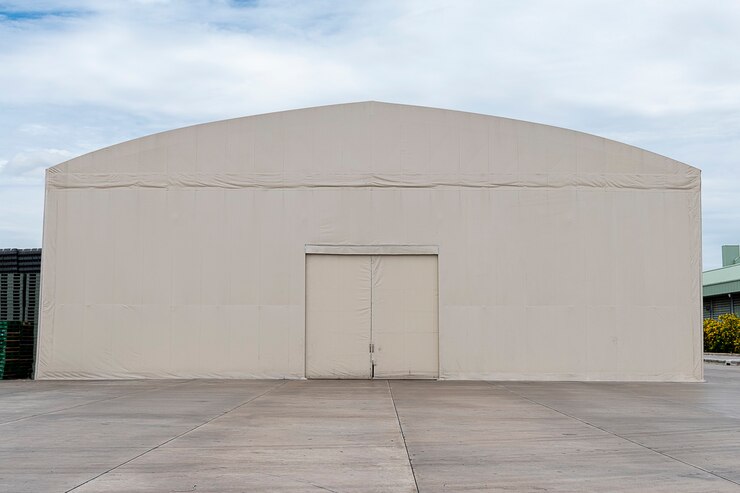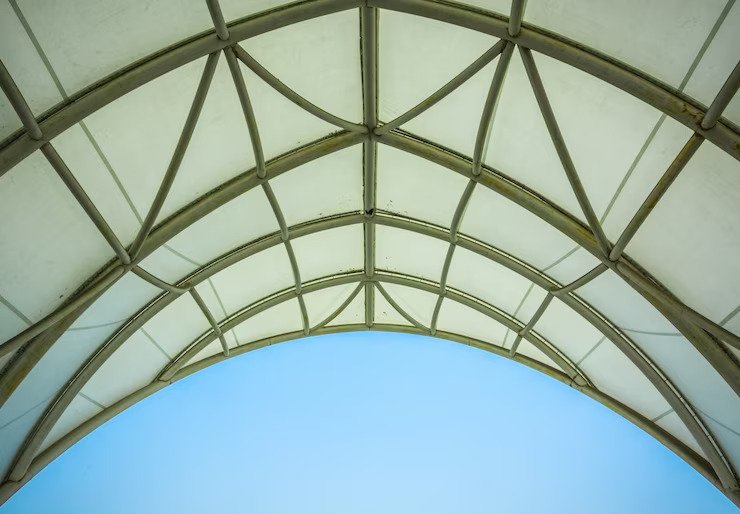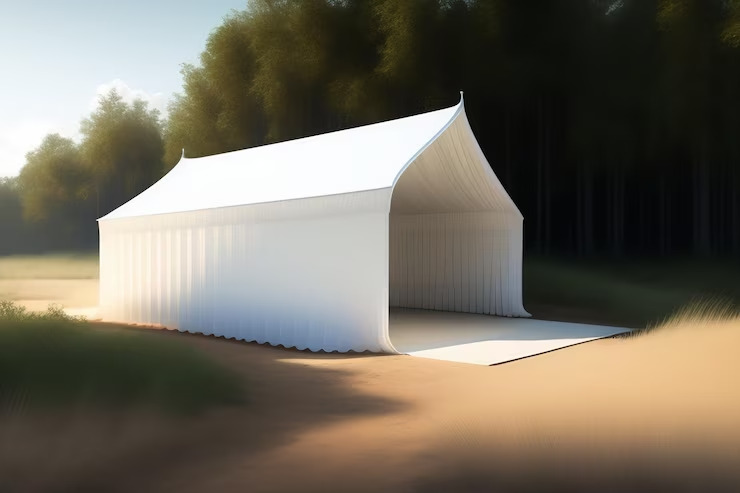Selecting Fabric Shelters: Key Features & Considerations
by Arnab Dey Real Estate Published on: 27 July 2023 Last Updated on: 02 August 2023

A fabric shelter, often a critical element in various industrial, commercial, or even personal contexts, is a versatile solution for many needs. It protects valuable assets against weather elements and serves as a functional space for work, storage, and events.
The task of choosing the proper fabric shelter is no trivial matter. Instead, it’s an investment into a structure that must provide reliability and durability. Understanding the various types, key features, and specific factors to consider is integral in making an informed decision.
Key Features For Optimal Performance

A solid grasp of the key features that influence the optimal performance of a fabric shelter is crucial. These encompass the quality of materials used, design and construction, the ability for customization, and the provision of warranties and after-sales services.
1. High-Quality Material
Fabric shelters are, by nature, exposed to a variety of environmental elements. Therefore, the material they’re made from is of paramount importance. It’s about strength, durability, and how the material responds to environmental stressors.
Specifically, the fabric should resist UV rays, wind, and water. This quality is fundamental to ensure the longevity of the structure. For instance, insulated fabric shelters demonstrate remarkable resilience to these elements, offering superior protection and durability. This resistance not only protects what’s inside the shelter but also preserves the integrity of the shelter itself.
Another crucial consideration is the material’s fire-retardant properties, given that these shelters are often used to store valuable assets, some of which may be flammable. A fabric shelter that can slow down or prevent the spread of fire could make a significant difference in the case of an accidental fire outbreak.
2. Design And Construction
The design and construction of a fabric shelter are integral to its performance. These features determine the shelter’s stability, durability, functionality, and comfort for those using it.
One of the critical elements of design is structural stability. A well-designed fabric shelter should provide robustness against high winds and heavy snow loads. This means attention to detail in the structural elements, such as the frame and anchoring system, is crucial.
Ventilation features in the design are also essential. Good ventilation helps maintain an optimal internal environment by reducing heat and moisture buildup. This is vital for the comfort of those inside and preventing damage to any equipment or goods stored inside the shelter.
Furthermore, the design should maximize natural light to reduce dependence on artificial lighting, thereby minimizing energy consumption. This could be achieved through strategically placed transparent or translucent panels that allow ample sunlight to penetrate the shelter.
3. Customization Options
No two needs are exactly alike, so customization options are a significant feature to consider. Adaptability to specific needs might include dimensions, entrance and exit points, type of doors, and interior layout. The ability to customize these factors ensures the shelter can fit its intended purpose like a glove, improving functionality and user satisfaction.
Aesthetic considerations also fall under customization. The look of a fabric shelter can impact the overall impression of a space, especially in event or retail settings. Options for custom colors, branding, and other design elements can help align the fabric shelter with a specific theme or brand image.
4. Warranties And After-Sales Services
Finally, providing warranties and after-sales services highlights the key features to consider for optimal performance. These assurances indicate the manufacturer’s confidence in their product and commitment to customer satisfaction.
A solid warranty can provide peace of mind, knowing that any defects in material or workmanship will be addressed. It also serves as a testament to the product’s quality and durability.
In addition to warranties, after-sales services such as installation support, maintenance guidance, and prompt customer service are crucial. These enhance the overall ownership experience and ensure the fabric shelter performs optimally for its intended lifespan.
Factors To Consider When Choosing A Fabric Shelter

Choosing the proper fabric shelter involves analyzing various factors. These span from planned use and environmental conditions to size requirements, ease of assembly and disassembly, budget considerations, and expectations of durability and maintenance.
A. Purpose And Intended Use
The purpose and planned usage of the fabric shelter are primary factors to consider, as they heavily influence the type and design required. For instance, a fabric shelter for an outdoor event such as a wedding will have different requirements from one designed for industrial storage or livestock housing.
Furthermore, the required features and specifications will vary based on whether the shelter is intended for temporary or permanent use. For example, a fabric shelter for a one-off event may not need to be as durable as one meant to provide long-term industrial storage.
Understanding the purpose and planned usage helps narrow options and focus the selection process.
B. Environmental Conditions
Environmental conditions play a significant role in the selection of a fabric shelter.
Things to consider in this regard include the following:
- Weather Considerations
Weather patterns, including rainfall, wind, and snow loads, are critical considerations. A fabric shelter with solid wind resistance is crucial for areas that often experience high winds. Places with heavy snowfall require shelters designed to withstand heavy snow loads. Meanwhile, UV-resistant materials will be necessary to prevent degradation over time if the shelter is frequently exposed to intense sunlight.
- Geographic Location
The location’s geography can also influence the type of fabric shelter selected. For instance, if the shelter is to be used in a coastal area, it should be made of materials resistant to corrosion from the salty sea air. Similarly, if the shelter is to be used in a cold climate, choosing a shelter with insulated materials might be necessary to maintain a warmer internal temperature.
C. Size Requirements
Size requirements are another critical factor when choosing a fabric shelter. This goes beyond square footage; the shelter’s height is equally essential, especially if it’ll house tall equipment or structures.
The shelter should be large enough to accommodate its intended use comfortably. For instance, a shelter for storing machinery must be broad and tall enough to accommodate the equipment easily. At the same time, consideration should also be given to future needs, such as expansion or additional storage requirements.
D. Budget Constraints
While finding a fabric shelter that meets all required needs is vital, the reality of budget limitations must be addressed. This entails carefully examining the cost implications immediately and in the long run.
Considering the initial outlay for the shelter and its long-term value is essential. This could include factors like maintenance costs, durability, and adaptability. For instance, an inexpensive shelter might seem attractive initially but could cost more due to frequent repair needs or a shorter lifespan.
It’s also crucial to note that a higher-priced shelter may offer enhanced durability, better material quality, or additional customization options, which can provide more value over time.
Thus, it’s critical to balance initial costs and long-term value. This will ensure that the chosen fabric shelter is cost-effective and an investment that’ll serve its purpose effectively for many years.
E. Installation And Dismantling Ease
The ease of installing the shelter is a critical factor, mainly if the structure is meant for temporary use or will need to be moved frequently. A fabric shelter that’s complicated or time-consuming to assemble might be less ideal for situations where speed and efficiency are essential.
Additionally, the shelter should be designed to be easily dismantled without damaging its components. This not only makes relocation easier but also prolongs the life of the shelter, thereby providing better value.
F. Longevity And Durability
As mentioned earlier, durability is a crucial consideration when selecting a fabric shelter. Ideally, it should be able to withstand the elements and last for a long time. Picking a resilient shelter brings peace of mind, especially for crucial applications.
Material and craftsmanship quality, along with shelter design, determine durability. For instance, fabric shelters made from robust polyvinyl chloride (PVC) or polyethylene (PE) resist damage effectively. This ensures the shelter maintains its integrity despite weather challenges.
The shelter design, encompassing frame design, fabric attachments, and anchoring system, influences its lifespan. A well-constructed shelter maintains its aesthetic appeal and functionality, providing excellent value over time, particularly for heavy-duty use, like in industrial or agricultural settings.
G. Maintenance Requirements
It’s essential to consider the maintenance requirements of the fabric shelter. Some materials and designs may require more rigorous upkeep than others to keep them in good condition and prolong their lifespan.
Maintenance can include the following steps:
- Regular cleaning.
- Treating the fabric to prevent UV damage.
- Promptly inspecting and repairing any damage.
Understanding the maintenance requirements of a fabric shelter can help ensure that it remains a cost-effective solution over the long term.
Conclusion
The process of selecting the proper fabric shelter necessitates careful consideration of numerous factors. These encompass the purpose, environmental conditions, size, ease of installation and dismantling, budget, durability, and maintenance needs.
Simultaneously, optimal performance is ensured through features such as high-quality materials, thoughtful design, customization options, and robust after-sale services. By keeping these critical elements in mind, one can make an informed choice, securing a fabric shelter that meets all requirements and offers optimal value for money.
Read Also:







































































































